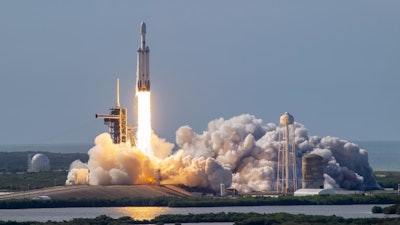
NASA successfully launched the fourth and final satellite in a series of advanced weather satellites for NOAA (National Oceanic and Atmospheric Administration) on Tuesday. The GOES-U (Geostationary Operational Environmental Satellite) will benefit the nation by providing continuous coverage of weather and hazardous environmental conditions across much of the Western Hemisphere.
The satellite launched on a SpaceX Falcon Heavy rocket from Launch Complex 39A at NASA's Kennedy Space Center in Florida. Mission managers confirmed the spacecraft's solar arrays successfully deployed, and the spacecraft was operating on its own power.
In addition to its critical role in terrestrial weather prediction, the GOES constellation of satellites helps forecasters predict space weather near Earth that can interfere with satellite electronics, GPS, and radio communications. The GOES-U satellite goes beyond the capabilities of its predecessors with a new space weather instrument, the Compact Coronograph-1, which blocks the Sun's bright light so scientists can observe the relatively fainter solar atmosphere.
Once GOES-U is in a geostationary orbit, about 22,200 miles above Earth, it will be renamed GOES-19. Following a successful orbital checkout of its instruments and systems, GOES-19 will go into service, keeping watch of the weather over most of North America, including the contiguous United States and Mexico, as well as Central and South America, the Caribbean, and the Atlantic Ocean to the west coast of Africa.
NASA's Goddard Space Flight Center in Greenbelt, Maryland, oversaw the acquisition of the GOES-R series spacecraft and instruments and built the magnetometer for GOES-U and its predecessor, GOES-T. NASA's Launch Services Program, based at Kennedy, provided launch management for the mission.
The GOES-R Series Program is overseen by NOAA, through an integrated NOAA-NASA office that manages the ground system, operates the satellites, and distributes data to users worldwide. Lockheed Martin designs, builds, and tests the GOES-R series satellites. L3Harris Technologies provides the main instrument payload, the Advanced Baseline Imager and the ground system, which includes the antenna system for data reception.






















